|
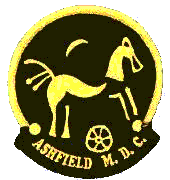
| |
SILVER SURFER NORMAN!
|
 |
|
Ashfield Metal Detecting Club member, Norman Daynes, is pictured
above with his daughter, Elaine, and (left) Community IT Champions
coordinator Jane Jackman. at Kirkby’s Centrepoint Community Centre
Norman owns an electrical shop so when one of his
suppliers changed to conducting business online Norman, at the age
of 86, decided in order to keep trading, to enrol with his daughter,
for a course of IT training. However his love of metal detecting is
still evident as shown in the photograph, on the laptop screen can
be seen a page from the Ashfield Club website. The central image is
the 17th., century double ended silver seal, of the Warburton
family, found by him near Newark in March 2005.
Norman, in 1994, was a founding member of the club and he was made a
life member in 2010. He is a skilled and dedicated detectorist with
two “Find of the Year” and twenty “Find of the Month” awards to
date!
*** |
FIND OF THE MONTH OCTOBER 2010
 |
 |
COIN:-
Copper farthing.
Charles
1.
Found
by Jeff Oscroft. |

|
ARTEFACT:- Tudor belt mount.Found by John Radford. |
MOST UNUSUAL FIND
Ivan Falconbridge, toy aeroplane.
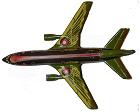
*** |
|
FIND OF THE MONTH
NOVEMBER 2010 |
 |
COIN:- Philip
and Mary groat.
Found by David Hallam. |
|
 |
ARTIFACT:- Buckle. Found by Richard Waite. |
|
MOST UNUSUAL FIND |
 |
Awarded to John Radford for his "GEORGE". |
|
FIND OF THE MONTH
DECEMBER 2010 void due to bad weather. |
|
FIND OF THE MONTH
JANUARY 2011 |

RICHARD IS ALL "BROKEN" UP. |
COIN:- Gold stater
Found by Richard Waite.
Unfortunately the coin was broken in half when
found.
|
 |
|
 |
ARTEFACT:- Tudor dress fastener. Jeff
Oscroft. |
OTHER FINDS MADE SINCE THE LAST
NEWSLETTER
|
| 
Casket key. Peter Mayfield.
***

MOST UNUSUAL FIND JANUARY,
2011.
Dennis Brown |
NAMED HARNESS MOUNT Found by Dennis Brown.

Trade directory research :- George Simpson, Saddler at 8,
Leeming Street, Mansfield in 1869. Then Edwin Bennett,
Saddler, shown at that address until 1900 when an entry in
Kelly’s Directory for that year showed E. Bennett, Saddler,
with an address at 79, Leeming Street, Mansfield.. The 1904
directory does not list a Mansfield Bennett under saddlers.
***
|

East India Company 1/4 Anna, 1835
Found by Terry Hurt.
***

Trapezium shaped belt buckle. Found by John Radford
From the last quarter of the 16th., century
to the end of the 17th., century. Smaller buckles of this
type are spur buckles. |
|
|
|
ASHFIELD CLUB FAMOUS
LOOK-ALIKES. |
|
 |
|
*** |
|
I KNOW THAT POT OF GOLD IS HERE SOMEWHERE! |
|
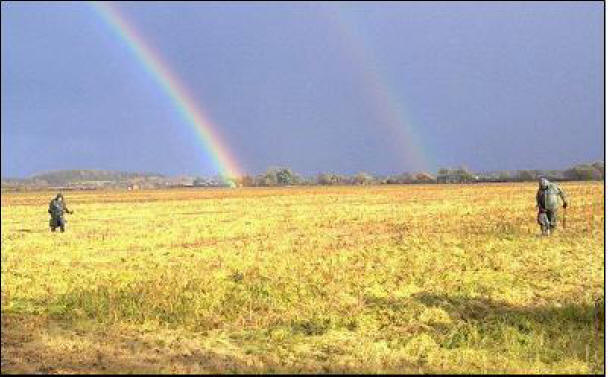 |
|
A FIELD IN NORTH
NOTTINGHAMSHIRE
An
idyllic scene, two dedicated detectorists, Dennis
Brown and Paul Wigginton detecting on a stubble
field. Idyllic, so it would seem, but that was far
from the truth, it was one of the coldest, wettest
and most miserable days of the year. The photograph
above was taken during a few moments break in the
rain.
Seven hardy souls braved the weather, unfortunately
nothing of interest was found, not even a pot of
gold!
No search fee was paid to this
landowner instead it was donated, at his request, to
the Lincolnshire and Nottinghamshire Air Ambulance
Charity.
*** |
|
COMMITTEE FOR 2011—2012
(The usual suspects). |
|
CHAIRMAN/SITE SEC. |
SECRETARY
|
TREASURER
|
|
 |
 |
 |
|
Dave Hallam |
John Gough
|
Mary Severn
|
|
SEARCH SECRETARY
COMMITTEE |
|
 |
 |
 |
|
Jeff Oscroft
|
Pat Walker |
John Radford
|
|
 |
Graham and June Reedman are committee members.
June has the position of Site Marshal and is
responsible for the conduct of searches.
They still prefer not to have their photographs
published in the newsletter and have the two
caricatures to represent them.
|
|
NOTTINGHAMSHIRE PLACE NAMES
BY
ANTHONY POULTON-SMITH
ASHFIELD
Saxon aesc+feld -Meaning open land where
ash trees grow.
BLIDWORTH
BLEDEWURDA in 1180,Points to ( Enclosure of
Blitha). WORTH-(Enclosure)
something intended to keep livestock safe
overnight.
CALVERTON
Old English calfra+tun, Meaning (The
Farmstead where calves are reared).
FARNSFIELD
In 958 FEARNESFELD, Meaning (Open land where
ferns grow).
COOMBS FARM (Broken Land) uneven,not
uniform,difficult to work.
KIRKLINGTON
In 958 CYRLINSTUNE,in 1220 KIRTLINGTUN.
Saxon personal name with Old
English
ing+tun (The Farmstead of the family of
CYRTLA)
MANSFIELD
In 1086 MAMESFELDE, it may be that the name
comes from (Open Land by the river
Maun), This is a Celtic river name from
NAMM.
NEWARK
Derived from Old English niwe+weorc, (The
New Fortification).
OLLERTON
ALRETUN/ ALRETON 1176, Old English alor+tun
Farmstead where alder trees
grow
SHERWOOD FOREST
Old English scir+wuda (The Wood Belonging to
the Shire).
SOUTHWELL
SUDWELLA in 958,SUDWELLE in 1086, suth+wella,
Old English name for (Place
at the South Spring).
COMMON PLACE NAME ELEMENTS
O/E -OLD ENGLISH O/S- OLD
SCANDINAVIAN
BANKE-Bank,Hill,Slope O/S BEKKR-Stream
O/S BROC-Brook,Stream
O/E BURH-Fortified Place O/E
BY-Farmstead O/E
CEASTER- Roman Stronghold O/E FALD-Animal
Enclosure O/E FELD-Open Land
O/E HLAW-Tumulus O/E SCEAGA-Small
Wood,Copse O/E STRAET-Roman Road
O/E WUDU-Wood
Many Thanks to : THE HISTORY PRESS:
www.thehistorypress.co.uk. Alan
Roberts
***
|
| |
|
 |
JUST AN OLD VASE!
When this nicely decorated Chinese vase
was put up for sale recently at
Bainbridge’s, a small London auction
house, no one expected the bidding to be
so intense. The winning bid was by a
Chinese buyer who astonished everyone by
bidding 83,000,000 dollars! That is
nearly £52,000,000 in real money.
Peter Bainbridge, the
auctioneer, said the sale price was more
than forty times the pre-sale estimate,
a record for a Chinese work of art.
The vase had been in the
possession of the same family for over
80 years and the sellers, the sister and
nephew of a deceased lady, from West
London wish to remain anonymous.
( I bet they do!)
|
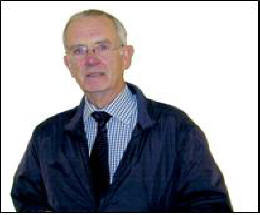 |
JEFF OSCROFT
Jeff has been a search secretary at
the club for many years, so many
years that no written records of
those first searches exist.
Speculation was rife in the club
when Jeff attended in collar and tie
at a recent meeting. Guesses from
the members to account for this
sartorial splendour ranged from, a
win on the lottery to him getting
the job as a male model for the new
Argos catalogue. The truth was
eventually teased out of him.
IT WAS HIS BIRTHDAY. |
|
EXTRACTS FROM THE
NOTTINGHAM AND DISTRICT YEARBOOK
1750. |
|
Continued from the previous
newsletter…………..
Owing
to the bad state of the
highways, the carriers, whether
by pack or wheel-carriage, were
in number very limited.
So inadequate were these
conveyances to accommodate the
intercourse of the district,
that no fewer than 400
saddle-horses were kept by the
middle and trading class of
Nottingham alone, a proportion
of about one horse to each 29
inhabitants. These means of
conveyance were, however,
inaccessible to the generality
of the working classes, who,
when required at distant places,
had to perform many a weary
pilgrimage on foot. The idea of
such a luxury as cheap railway
trains flying at a speed of
twenty miles an hour, would have
been deemed highly Utopian and
visionary. William Hutton states
in his " Life," that when in
business at Nottingham, (at
about the date indicated in the
margin.) he walked to London and
back for the purpose of buying
tools, and was nine days away
from home, six of which were
spent in going and returning. He
travelled all the way on foot,
dreading robbers, and still more
dreading the cost of food and
lodging at public-houses. His
whole expenses during this
toilsome expedition were only
ten shillings and eight pence;
but he contented himself with
the barest necessities, keeping
the money for his tools sewed up
in his shirt-collar. If Hutton
had lived in these days, he
would, upon principles of sheer
economy, taking into account the
loss of time, have gone to
London and back by a "
Government train," as well as
have avoided much fatigue and
danger.
The nobility and gentry were
accustomed to make their long
journeys in ponderous family
carriages, drawn by four horses-
These vehicles would be laden at
the top with an array of trunks
and boxes, while perhaps six or
seven persons, with a lapdog,
would be stowed within. The
danger of famine on the road was
averted by a travelling larder
of baskets of various
condiments; the risk of thirst
would be provided against by
bottles of usquebaugh (whisky),
black cherry-brandy and cinnamon
water, port or strong beer.:
while the convoy would be
protected by basket-hilled
sword, an old blunderbuss, and a
bag of bullets and a great horn
of gunpowder. Such protection in
those days was necessary. The
roads were infested with
highwaymen, and stoppages were
of almost daily occurrence. Many
a Dick Turpin traversed the open
roads and frequented the
secluded nooks of this and the
neighbouring counties, and an
encounter with one or more of
them was a contingency for which
the prudent traveller had to
provide.
The highwaymen were in general
wary and desperate, well knowing
that if once in the clutches of
the law, their doom was certain.
Death was the common punishment
of this and other offences. "
Guilty—Death," were familiar
words in the criminal courts. It
was death to steal mutton—death
requited the industry of the
burglar, the shoplifter, and the
coiner—death attended all, and
was regarded as the great
conservator of social security.
The murderer fared no worse than
the robber of a hen-roost. All
were thrust alike into an
underground cell, and at the
appointed hour, led forth to
expiate their crime on the
Gallows-hill.
Felons in the Town Jail were
chained in vaults under the
present building Their condition
was at times wretched, the
distemper known as “ the jail
fever “ raging so violently as
to decimate their number.
Debtors were incarcerated in the
cells above. The County Jail in
the High-pavement, occupied but
a part of the site of the
present structure. It had a
ham-like appearance, with three
large wooden gates in front in a
very dilapidated state, and was
altogether little better than a
ruin.
*** |
|
BUSTS ON
ROMAN COINS THAT MAY BE
FOUND IN BRITAIN (6)
|
 |
Valerian 1 235—260.
P. Licinius Valerianus was
born in 195 AD. Holding many
offices of state until he
was 60 years old when, on
the death of Gallus, his
troops proclaimed him
emperor. In 253AD. he
invaded Italy and became
joint ruler of the Roman
Empire with his son,
Gallienus. In 260 he was
captured by the Persians and
remained in captivity for
the rest of his life. The
only Roman emperor captured
in battle.
Gallienus 238—268.
P.
Licinius Egnatius Gallienus,
son of Valerian, was made
co-emperor on his father’s
elevation in 253 AD. After
Valerian’s capture Gallienus
became sole ruler of the
empire. He was murdered at
the siege of Milan by the
commander of the Dalmatian
cavalry a mobile strike
force that he had created
during his reform of the
army.
Postumus 259—268.
M. Cassianius Latinius
Postumus although of humble
birth was a soldier of
considerable ability. He was
made commander of the Rhine
legions by Valerian. In 259
he rebelled against
Gallienus and ruled Gaul,
Spain and Britain until
268AD. When he was murdered
by his own troops at Mainz.
Claudius
11 GOTHICUS 268—270.
M. Aurelius Claudius was
born about 215AD. Being an
able soldier he rose to
become one of the highest
regarded generals. When
Gallienus was assassinated
Claudius was proclaimed
emperor . In 269 AD.
Although outnumbered he
defeated the Goths in a
great battle that earned him
the name Gothicus. He died
of a plague caught from
Goths who survived the
Battle.
Victorinus
268—270.
M. Piavonius Victorinus
succeeded to the throne of
the Gallic Empire in 268 AD.
Spain refused to recognise
him and central Gaul
revolted. He suppressed the
revolt in 270 AD. When he
captured the city of Autun
after a seven month siege.
He built up anger among his
officials by seducing their
wives and was killed by one
of his own officials after
making sexual advances to
his wife.
Tetricus
270—273.
C.Pius Esuvius Tetricus was
the governor of Aquitania
and on the death of
Victorinus he succeeded to
the throne due to the
influence of Victoria the
mother of Victorinus. When
Aurelian invaded Gaul
Tetricus surrendered to him.
In an act of clemency
Aurelian spared the lives of
Tetricus and his son, they
lived their lives out
peacefully in Rome.
|
|
BOOKSHELF |
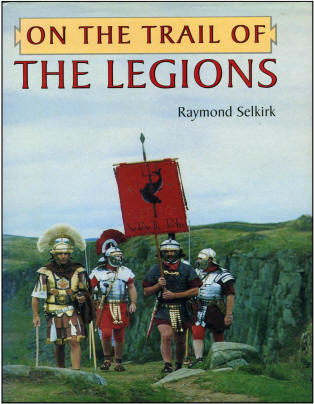 |
On “The Trail Of The
Legions” by Raymond
Selkirk was given to me
as a birthday present in
1996. The cheapest I
have seen it on the
internet is £27.50. The
book is about a search
for new evidence of the
Roman military in
Britain.
An army of occupation
needs to be able to take
rapid military policing
action and needed an
extensive network of
roads. Hundreds,
possibly thousands, of
miles of Roman roads
remain to be found in
Britain. After the Roman
withdrawal from, these
military roads were
unused by the Saxons
except as a land
boundaries. They are now
disguised as field
walls, edge lines,
footpaths, bridleways
and farm tracks.
The combination of
research, map
interpretation and keen
observation is all that
is required to
rediscover them. This
book gives techniques to
assist the reader to
identify Roman roads,
bridges, dams, fords,
signal stations and
aqueducts. It is a
worthy successor to his
previous book, “The
Piercebridge Formula”
which upset the
archaeological world on
its publication. Another
reason to read it is
that he had time for,
and used, metal
detectorists in his
research
JMBG
|
|
GREAT SEAL OF THE KING OF
ENGLAND — HENRY 1V 1399—1413. |
|
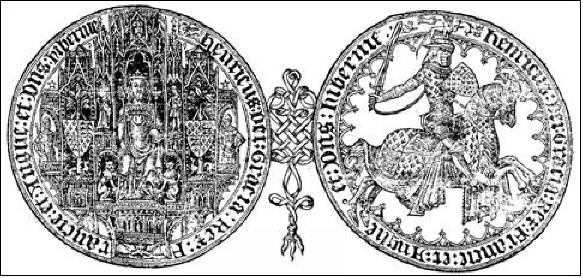 |
|
